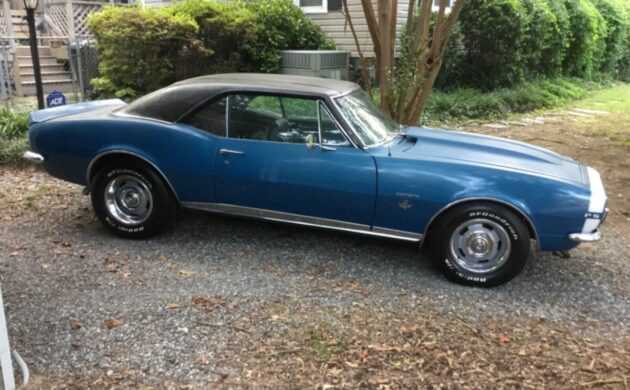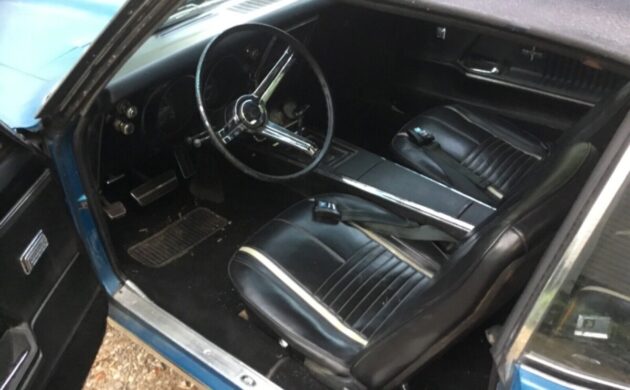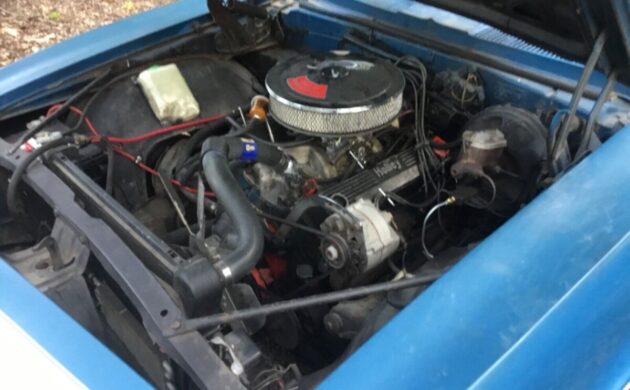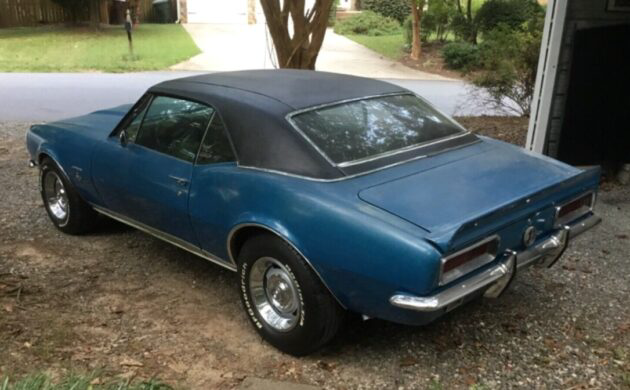Choosing what path to pursue with a classic build can be challenging. Some cars are considered so iconic that performing modifications will cause some enthusiasts to hyperventilate. That brings us to this 1967 Chevrolet Camaro RS. It has already undergone changes, but the new owner could reverse these as part of a thorough restoration. They will start from an excellent base because this Chevy is structurally sound. If you are wavering and examining your bank account to confirm whether it fits your budget, I would hardly blame you. The Camaro is listed here on eBay in Greensboro, North Carolina. The seller set a BIN of $30,000, and while that doesn’t make it affordable, it is worth delving deep to determine whether the figure is justified.
Ford caught the opposition flat-footed when it released the First Generation Mustang. Had it not been for the Plymouth Barracuda, the Ford would have dominated the pony car sector containing a single badge. General Motors joined the party in late 1966, launching the Chevrolet Camaro for the 1967 model year. Initial sales were not in the Blue-Oval’s league, but examining pony car figures for 1966 and 1967 confirms the new Camaro stole sales that Ford could have rightly expected. This Camaro RS presents reasonably well in what appears to be LeMans Blue with a Black vinyl top. That shade didn’t appear in the Camaro range until 1968, and a quick peek at the Cowl Tag confirms the original owner ordered this RS in Butternut Yellow. The paint retains a respectable shine, but the car would undeniably benefit from a cosmetic refresh. This will involve some rust repairs, which aren’t as extensive as we often see in cars from this era. The seller acknowledges the presence of tin worm in both lower rear quarter panels but doesn’t mention other areas of interest. If that is the extent of the trouble, patches might prove a viable solution. It would also justify the seller’s description of this RS as “a great starter.” The vinyl shows no signs of deterioration, and the glass is excellent. The trim and Rally wheels are suitable for a driver-grade restoration, and the distinctive RS grille looks excellent.
Opening the Camaro’s doors reveals an interior with two vital attributes. The first is that its condition is such that it has no immediate needs. Secondly, the original owner loaded it with some of the most desirable factory options a buyer could choose in 1967. It features the Custom interior option with two-tone Black and White seatcovers and molded door armrests. The console houses the factory sports gauge cluster, while this is 1-of-4,957 ordered with power windows, and 1-of-7,980 produced with a “Comfortilt” wheel. The overall condition is acceptable for a driver-grade vehicle, with only a few flaws worth mentioning. A seam separation is developing on the driver’s seat, and attending to this early would be wise. The console has some scratches, and a radio/cassette player occupies the factory radio’s rightful spot. Otherwise, this interior has no pressing needs.
This Camaro proves that you shouldn’t believe everything you read. The air cleaner decals suggest the engine bay houses a 302ci V8, but the seller confirms it is a 327. The original owner also selected a two-speed Powerglide transmission and power assistance for the steering and brakes. Combine the drivetrain configuration with the interior options, and it becomes apparent that they focused strongly on comfort. The V8 should produce 210hp, which placed it almost exactly midway between Ford’s C and A-Code V8 motors. However, the Camaro’s slightly higher curb weight and the Powerglide transmission meant it lingered behind an auto-equipped Mustang featuring either engine. We’re flying blind on this Camaro’s mechanical health, although the engine bay presentation is encouraging. It is unclear whether the car is numbers-matching, but if the new owner doesn’t elect to pursue a faithful restoration, ditching the Powerglide would improve this car’s performance potential.
Originality is desirable in classic cars, but it isn’t essential. I prefer it, but I respect a well-considered and executed custom build. Those possibilities await the new owner of this Camaro. Still, the list of factory options increases its rarity to a point where I believe a faithful refurbishment would net the best potential future value. However, if a factory-fresh state is not the new owner’s goal, the finished product will only be limited by their imagination. If you let yours off the leash, how would you tackle it?










The car isn’t all it’s claimed to be. According to the trim/cowl tag the original owner did not order the deluxe interior or power windows. The VIN’s model number 12437 is for a standard interior coupe. The deluxe interior coupe is model number 12467. The power windows should appear on the trim tag in group 1 with an X (1X) but they don’t. Without a build sheet it’s a guess whether the tilt wheel is original or not. I’m guessing the latter.
FWIW The paint looks closer to Nantucket Blue than Marina Blue.
I would pass on this money pit.overpriced. gap at passenger fender tell me it’s been wrecked. As I’ve said I have over 40 yrs experience rebuilding. Buy one ready to drive an definitely don’t buy sight unseen.
I urge anyone looking to buy any classic car these days, “restored” or not, to watch Uncle Tony’s Garage on YouTube. He has many flipper car horror stories on there for your viewing pleasure. You will never buy a car sight unseen and without a professional inspection again!
What’s the hose coming over the core support? Can’t say I’ve ever seen that before.
transmission oil cooler add on you can just see it in front of the radiator on the driver side
I must be really out of touch or the seller is too high. $30K for a 67 RS Camaro that still needs resto work? I’m glad I’ve got already got enough project cars to keep me busy until I check out.
*POOF* Gone.
Wow, 30K for a car that is nowhere near original, a bit high, dont you think?